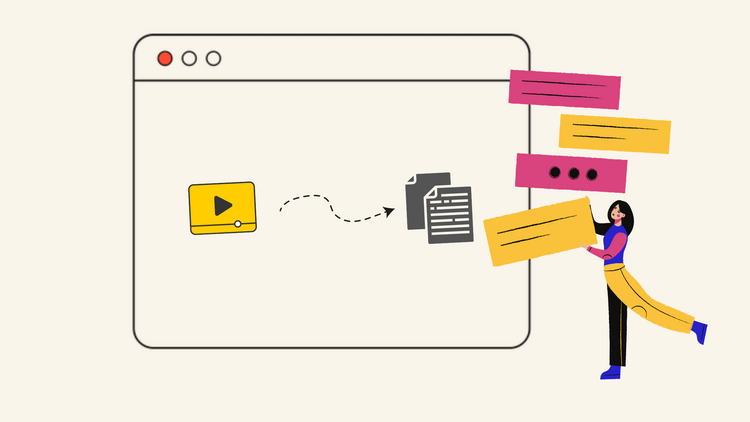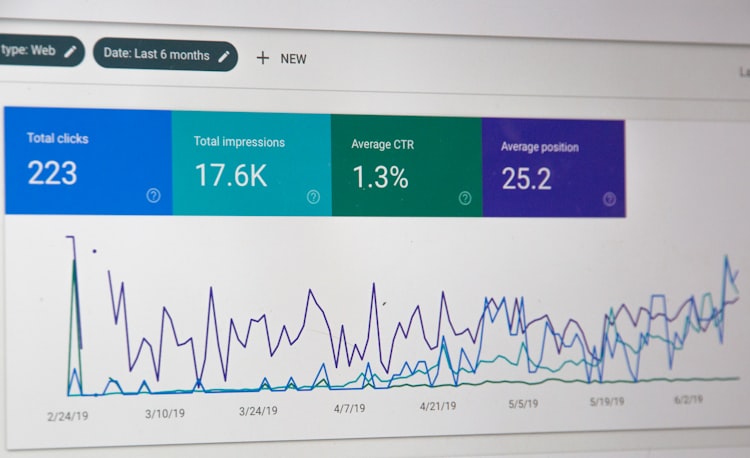Top 7 Blogging Platforms for Food YouTubers
Who doesn''t crave for food? It could be that mouth-watering sizzler or just a healthy salad. You''re feeling too lazy to cook and just want to find the best restaurant to indulge or the super chef within you is willing to try something new, and it''s all fair as long as it''s about food.
While some of us are willing to share our food experiences, food travel diaries, or even a few of our own kitchen hacks or recipes, nothing says it better than a well-presented website - a blog to showcase your passion and love for food.
Why you should have a Food Blog
While YouTube is a great platform to share your food recipes with the world using videos, many approaches cooking the old-school way.
Most of us feel happy when we can find the same recipe''s ingredients, instructions, and tips on a website in a text format. A lot of followers of culinary YouTube stars like Manjula''s Kitchen even go to the extent of printing out the recipe page from the website before giving it a try in their kitchen. This is where an excellent looking food blog compliments your YouTube presence.
What''s more exciting is that a well-presented food blog can be a great business. It takes minimal effort to organize your recipes into well-outlined sections for ingredients and instructions. If you''re looking to make your posts stand out, images, or even embedding your YouTube Video tutorial will do the trick.
You could then work with Google Adsense and other Ad networks to put up culinary advertisements and monetize any engagement with culinary advertisements on your blog/website. How you can make money from your recipe blog is a subject for another great post, we will surely write about that soon.
Now that you''re sold about the fact that you need to start a food blog and your YouTube food channel, let''s look at some of the top platforms that let you do this without getting into the hassle of website programming:
1. WordPress
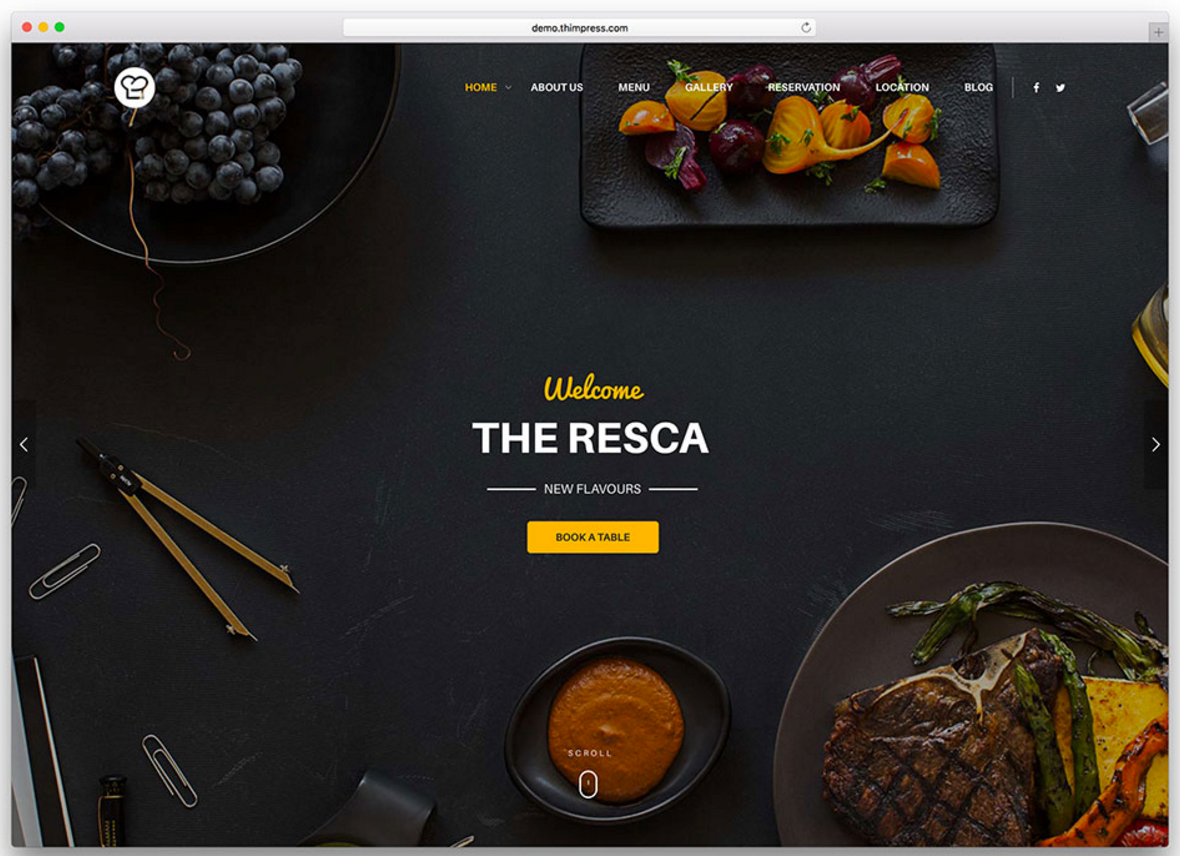
One of the most liked themes on WordPress - The Resca
WordPress is the most popular search platform on the web and is an excellent choice for anyone fond of the term ''customization''. WordPress comes in two versions: one is WordPress.org, which is the self-hosted version. Here you buy a custom domain name and website hosting service and install WordPress on it. The second option is WordPress.com, on which you can host on WordPress for free.
With WordPress.com, you cannot upload custom themes or plugins, limiting your blog''s growth. WordPress can seem a little confusing at first for those not so tech-savvy, but once you get the hang of it, it''s going to be an easy task. You can also have different options when it comes to your site''s wordpress design, giving you the ability to have a fresh new look every time.
2. Cucumbertown
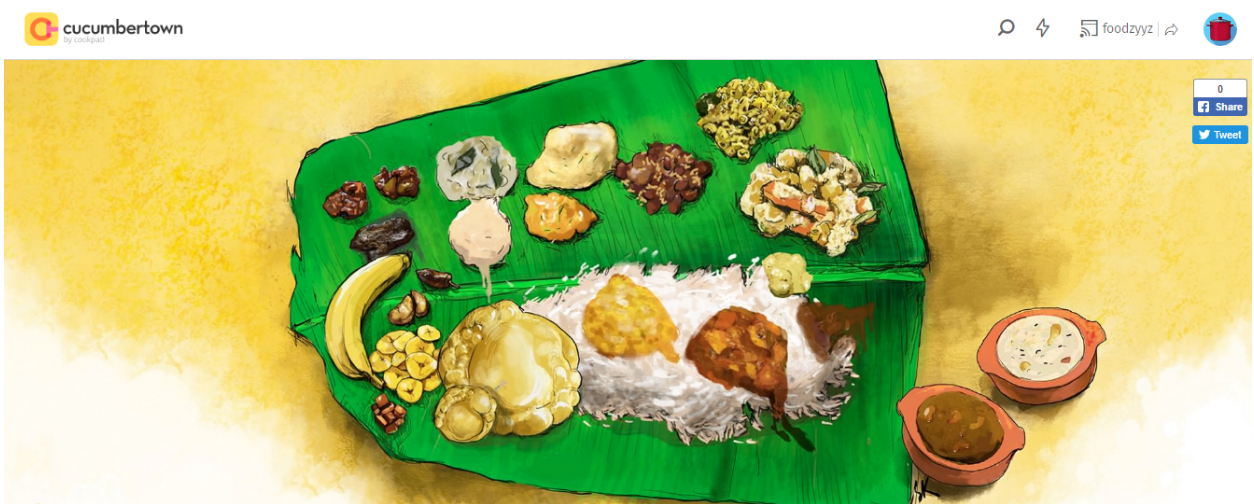
Cucumbertown is the world''s only food blogging platform
Can you believe it, a platform just for food blogs? Yes, Cucumbertown is the world''s first and largest platform for food blogging. I''m sure the founder of this one is quite a foodie. It is part of Cookpad, an internet corporation specializing in the recipe sharing service.
Being the first only food blogging platform, there are a few features which have to be paid more attention to like super easy analytics and the very user-friendly recipe writer (wow a recipe writer, doesn''t that make your work so much easier).
This site is great if bloggers aren''t sure how to make a WordPress blog. Cucumbertown''s design and user experience are unmatched, among other food blogging platforms.
Another reason why people choose Cucumbertown is the way it has optimized advertisement delivery on your website to get maximum revenues on ads. If you are not very particular about WordPress hosting and managing all the nitty-gritty details about your blog website, Cucumbertown is an excellent option.
Update: Cucumbertown has unfortunately shut down its operations. You can read more about it here.
3. Blogger
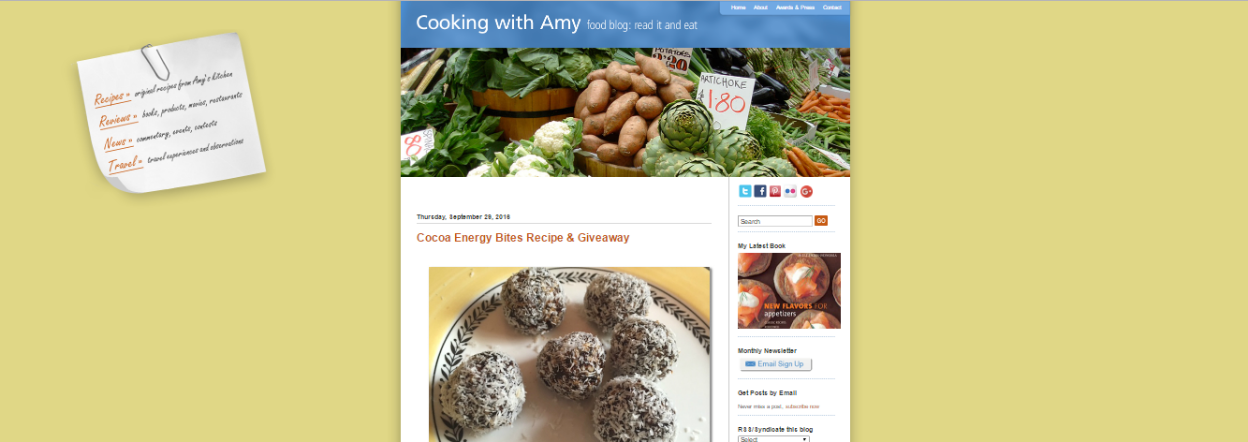
"Cooking with Amy" is a food blog on blogger run by Amy Sherman - a cookbook author, recipe developer and food writer.
Blogger by Google is an easy to use blogging platform. Blogger is easier to understand and work with compared to WordPress, which is a great relief for the ones new to blogging.
Another advantage of Blogger is the fact that even if the traffic to your blog spikes up, you don''t have to worry about the servers crashing or losing an audience because of that. A lot of people are put off visiting a site or Google "is website down" when they try to visit a page and find it doesn''t work. This is extremely detrimental for any website owner so you need to aim for as little downtime as possible.
If you are looking at a food blog with a lot of serious commitment, this might not be the right choice, as Blogger has limited design options, and it lacks functions such as print recipe. These are essential if you are looking forward to sharing stories, experiences, and recipes while also making some good money.
4. Tumblr
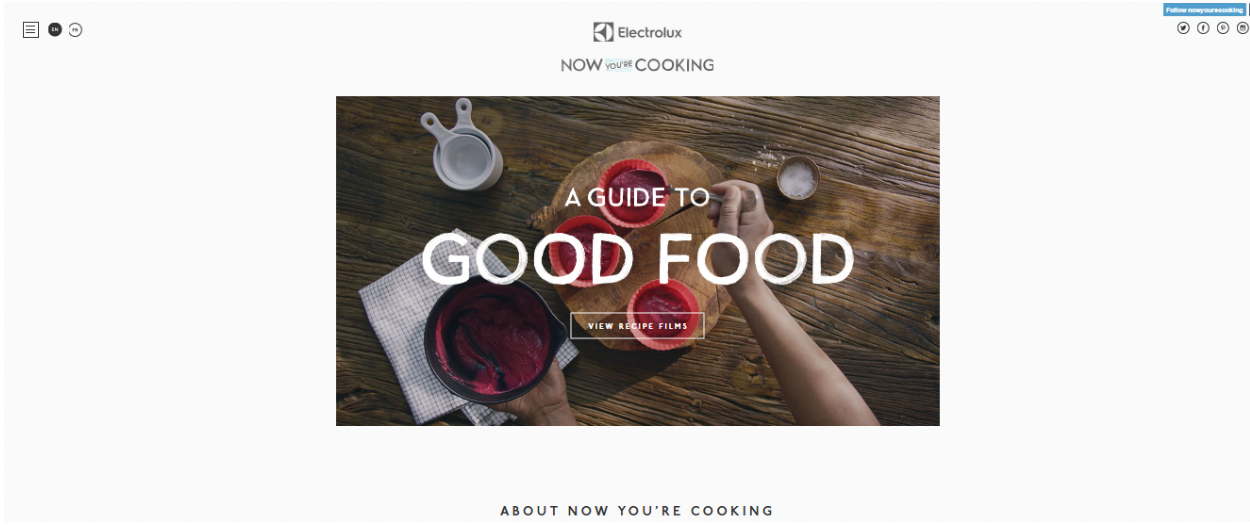
'Now you're cooking' talks about a variety of handy kitchen appliances
Tumblr is another excellent choice for a newbie blogger. Tumblr stays right up the chart with Cucumbertown when it comes to user experience and the ease of creating content. To work with Tumblr, you don''t have to be, as Tumblr is easy to use l. Tumblr can cause a little pain, too, as there are minimal designs available on this platform.
If you''re looking to monetize your content, Tumblr can make it tough for you.
5. Squarespace
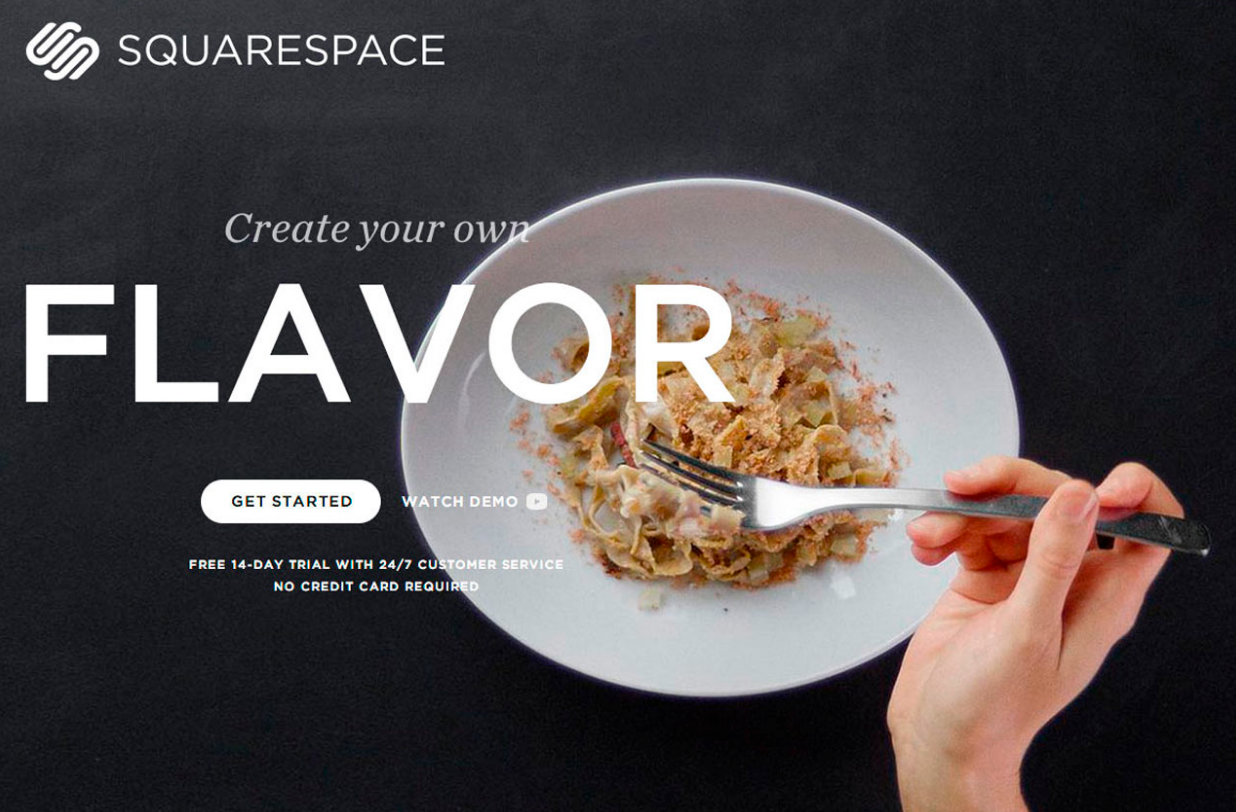
Squarespace offers a 14-day trial program
Squarespace is familiar among most of the culinary bloggers'' circles. It is easy to use and has a clean design, which is something most people look for.
One of the most exciting features of Squarespace is the implementation of responsive-design to all its templates. It provides a web interface that scales websites perfectly for any screen size.
From mobile screens to laptops to desktops, your web pages will display well. Yes, Squarespace is easy to use, but not more intuitive than Tumblr or Cucumbertown.
Squarespace works in something we can call a closed environment as it limits interaction with several other web services. Another thing that might seem like a drawback with Squarespace is that it isn''t free.
6. Typepad
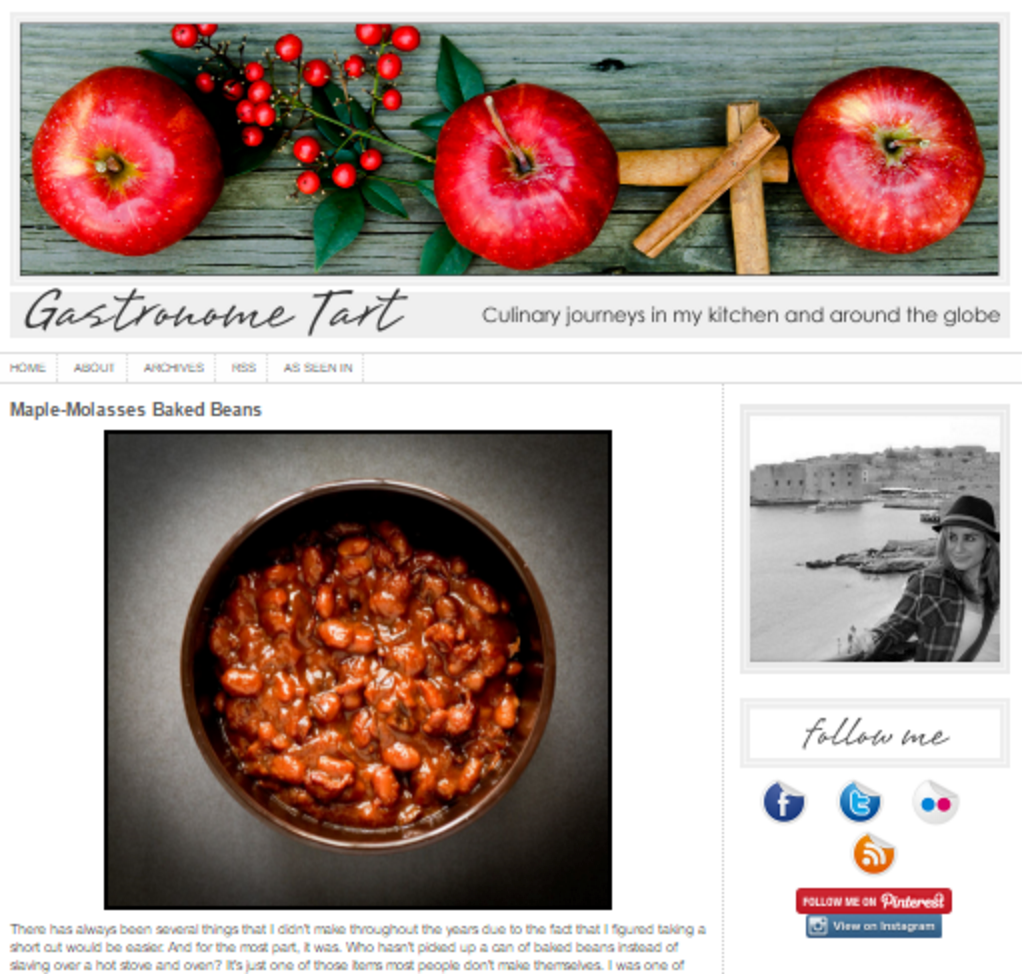
''Gastronome Tart'' is a food blog run by Miss. Amy on Typepad
With the gorgeous website design templates available on Typepad, you can start writing on their hosted blogging platform at ease. So, do you have a concept ready? Well, then all you have to do is start typing and watch your blog go live in a jiffy.
Once you decide that food blogging is your cup of tea and you are willing to customize your site with your domain name, Typepad will do it all for you.
7. Silvrback
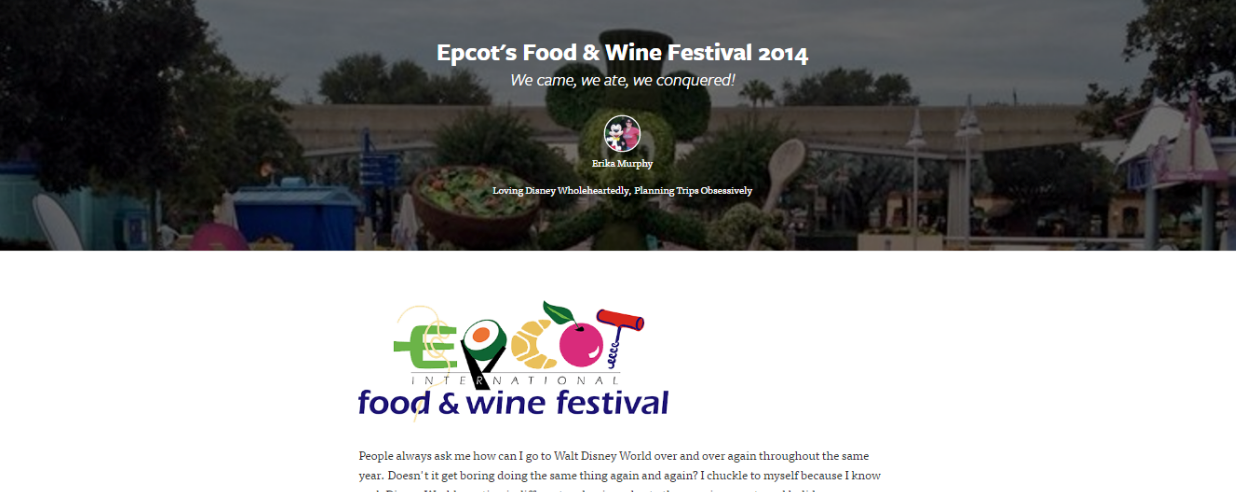
Damian Sowers is the founder of Silvrback
Silvrback is a blogging platform that focuses heavily on design and user experience. Silvrback also provides features such as email subscriptions and custom domain support.
To get started with your blog on Silvrback, you have to be on a yearly subscription. If you are considering Silvrback, there are a few things to be kept in mind like it is available only in hosted form, and there are limited design options.
I hope this list gives you a preview of the top food blogging platforms you can check out before starting to write. Once you have started to write and have the basics of your website completed, you can choose to then migrate your website in the future to use other hosting services with increased capabilities, similar to the hosting service you''re able to find at www.hostiserver.com as an example.
If you are using these platforms, let us know what the blogging experience has been. Also, feel free to share other alternatives that blogging enthusiasts can check out in the comments below.



